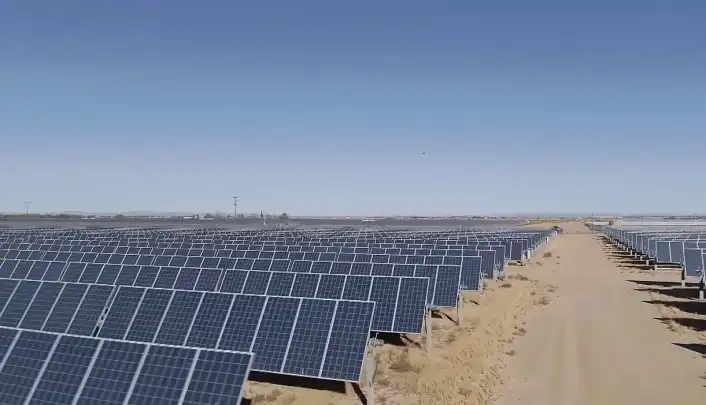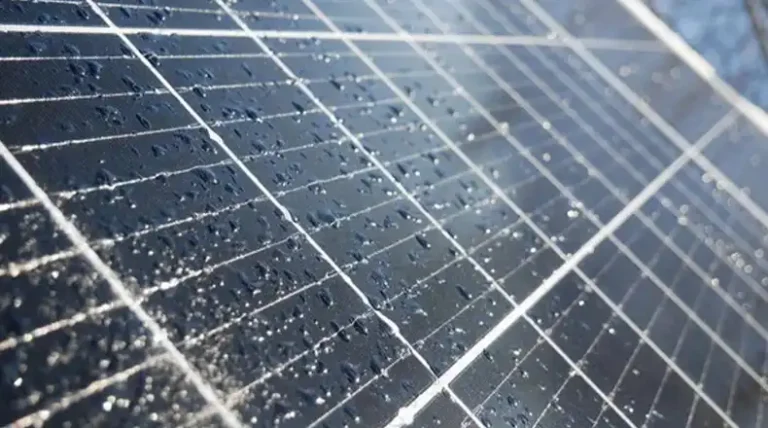How Solar Energy Reduces Your Carbon Footprint?

In an era where climate change looms large, reducing our carbon footprint has become more crucial than ever. Among the various solutions available, solar energy stands out as a powerful tool in the fight against greenhouse gas emissions.
But just how effective is installing solar power in shrinking your carbon footprint? The answer is quite impressive.
A typical residential solar panel system can slash carbon emissions by up to 80% compared to fossil fuels. This translates to avoiding about 1.5 to 2 tons of CO2 emissions annually for an average home – equivalent to planting 40 trees every year.
Solar energy’s impact goes beyond just numbers; it represents a tangible way for individuals and businesses to contribute to a cleaner, more sustainable future.
As we go deeper into the world of solar energy and its environmental benefits, we’ll explore how this technology works, quantify its impact on carbon reduction, and examine both its advantages and challenges.
Whether you’re considering solar panels for your home or simply curious about renewable energy’s potential, this post will shed light on how harnessing the sun’s power can significantly reduce your carbon footprint and help combat climate change.
Understanding Solar Energy and Carbon Footprint
Before we dive into the specifics of how solar energy reduces carbon footprint, it’s essential to understand what these terms mean and how they relate to each other.
What Is A Carbon Footprint?
Your carbon footprint is the total amount of greenhouse gases, primarily carbon dioxide, that are generated by your actions.
This includes direct emissions from activities like driving a car or using electricity, as well as indirect emissions from the production and transportation of goods you consume.
When we talk about reducing our carbon footprint, we’re essentially looking for ways to minimize these emissions and lessen our impact on the environment. This is where solar energy comes into play as a powerful solution.
How Solar Energy Works
Solar energy harnesses the power of the sun to generate electricity or heat. The most common form of solar technology used for electricity generation is photovoltaic (PV) panels.
These panels contain semiconducting materials that convert sunlight directly into electricity through the photovoltaic effect. Here’s a simplified breakdown of how solar PV systems work:
- Solar panels absorb sunlight
- The absorbed light creates an electric field
- This field causes electricity to flow
- An inverter converts the electricity from DC to AC for use in homes and businesses
Types Of Solar Technologies
While photovoltaic panels are the most widely recognized form of solar technology, there are other types as well:
- Concentrating Solar-Thermal Power (CSP): This technology uses mirrors to concentrate sunlight onto receivers that collect solar energy and convert it to heat. This heat is then used to produce electricity via a steam turbine or heat engine.
- Solar Thermal Collectors: These systems capture the sun’s heat for direct use in water heating or space heating applications.
Each of these technologies plays a role in reducing carbon footprints by providing clean, renewable energy alternatives to fossil fuels.
The Environmental Impact of Solar Energy
Solar energy’s potential to reduce carbon footprints is substantial, and its environmental benefits extend beyond just lowering greenhouse gas emissions. Let’s break down the various ways solar energy positively impacts the environment.
Reduction In Greenhouse Gas Emissions
The most significant environmental benefit of solar energy is its ability to generate electricity without producing greenhouse gases during operation. Unlike fossil fuels, which release large amounts of carbon dioxide and other pollutants when burned, solar panels produce clean energy from sunlight.
According to the U.S. Environmental Protection Agency, the average American home emits about 5.5 metric tons of carbon dioxide equivalent per year for electricity use alone. By switching to solar power, a household can potentially eliminate most of these emissions.
Comparison With Fossil Fuels
To truly appreciate the impact of solar energy, it’s helpful to compare its emissions to those of traditional fossil fuels:
- Coal: Emits about 1,000 grams of CO2 per kilowatt-hour (kWh)
- Natural Gas: Emits approximately 400-500 grams of CO2 per kWh
- Solar PV: Emits only 25-32 grams of CO2 per kWh (lifecycle emissions)
This stark contrast highlights how solar energy can dramatically reduce carbon emissions when replacing fossil fuel-based electricity.
Life-Cycle Assessment Of Solar Panels
While solar panels produce clean energy during operation, it’s important to consider their entire life cycle when assessing environmental impact. This includes manufacturing, transportation, installation, operation, and end-of-life disposal or recycling.
Studies have shown that the energy payback time for solar panels – the time it takes for a panel to produce as much energy as was used in its production – is typically 1 to 4 years, depending on the technology and location.
Considering that most solar panels have a lifespan of 25-30 years or more, this means they produce clean energy for the vast majority of their operational life.
Moreover, advancements in manufacturing processes and recycling technologies are continually improving the overall environmental profile of solar panels.
For instance, some manufacturers are now using recycled materials in panel production, further reducing the carbon footprint of solar technology.
It’s worth noting that while solar energy does have some environmental impacts, particularly in terms of land use and the materials used in manufacturing, these are generally considered minimal compared to the long-term benefits of reduced greenhouse gas emissions and air pollution.
Quantifying the Carbon Footprint Reduction
To truly understand the impact of solar energy on carbon footprint reduction, it’s helpful to look at some specific numbers and examples.
This section will break down the quantifiable benefits of solar energy in terms of emissions avoided and energy production.
Energy Payback Time
Energy payback time (EPBT) is a crucial metric in assessing the environmental impact of solar panels. It represents the time it takes for a solar panel to generate as much energy as was used in its production. According to various studies:
- Crystalline silicon PV systems have an EPBT of 1.5 to 2.5 years in sunny locations and 2.5 to 3.5 years in less sunny areas.
- Thin-film technologies typically have shorter EPBTs, ranging from 1 to 1.5 years in sunny regions.
Considering that most solar panels have a lifespan of 25-30 years or more, this means they spend the vast majority of their operational life producing clean, carbon-free energy.
CO2 Emissions Avoided
The amount of CO2 emissions avoided by using solar energy can be substantial:
- A typical 6kW residential solar power system can reduce carbon emissions by more than 4.5 tonnes per year.
- Over its 30-year lifespan, a solar panel system could avoid the emission of about 135 tonnes of CO2.
To put this in perspective, 4.5 tonnes of CO2 is equivalent to:
- The carbon sequestered by about 5 acres of U.S. forests in one year
- The emissions from burning 4,800 pounds of coal
- The greenhouse gas emissions from driving an average passenger vehicle for 11,000 miles
Real-World Examples And Case Studies
Let’s look at some real-world examples to illustrate the impact of solar energy on carbon footprint reduction:
Residential Case Study:
A homeowner in California installed a 5kW solar system on their roof. In the first year, the system generated 7,500 kWh of electricity, offsetting about 5.25 metric tons of CO2 emissions. Over 25 years, this system is expected to offset more than 131 metric tons of CO2.
Commercial Case Study:
A medium-sized business installed a 200kW solar array on their warehouse roof. In its first year of operation, the system generated 300,000 kWh of electricity, offsetting approximately 210 metric tons of CO2. Over its 30-year lifespan, this system is projected to offset more than 6,300 metric tons of CO2.
Utility-Scale Example:
The Topaz Solar Farm in California, one of the largest solar installations in the world, has a capacity of 550 MW. It generates enough electricity to power about 160,000 homes and offsets about 377,000 tons of CO2 annually – equivalent to taking 73,000 cars off the road.
Benefits Beyond Carbon Reduction
While the reduction of carbon emissions is a primary benefit of solar energy, its positive impacts extend far beyond just lowering our carbon footprint.
Let’s explore some of the additional environmental and societal benefits that come with embracing solar power.
Improved Air Quality
One of the most immediate and noticeable benefits of solar energy is improved air quality. Unlike fossil fuel power plants, solar panels don’t emit harmful pollutants such as nitrogen oxides, sulfur dioxide, or particulate matter during operation.
These pollutants contribute to smog, acid rain, and respiratory problems. By replacing fossil fuel-generated electricity with solar power, we can significantly reduce the amount of air pollutants released into the atmosphere. This leads to:
- Reduced incidence of respiratory diseases
- Decreased rates of asthma attacks
- Lower healthcare costs related to air pollution
- Improved overall quality of life, especially in urban areas
Reduced water usage
Traditional power generation methods, particularly thermal power plants (coal, natural gas, nuclear), require vast amounts of water for cooling. In contrast, solar PV systems require very little water to operate, mainly just for occasional cleaning of the panels.
According to the U.S. Department of Energy, electricity production from fossil fuels and nuclear energy requires 20-60 gallons of water per kilowatt-hour. Solar PV, on the other hand, uses only 0.03 gallons per kilowatt-hour, primarily for panel washing.
This significant reduction in water usage is particularly crucial in water-stressed regions, where solar energy can help conserve precious water resources.
Ecosystem Services
Solar installations, when properly planned and managed, can provide various ecosystem services:
Pollination support:
Some solar farms are now being designed with pollinator-friendly plants between and around the panels. These create habitats for bees, butterflies, and other pollinators, supporting local agriculture and biodiversity.
Soil conservation:
Ground-mounted solar arrays can help prevent soil erosion by providing cover and reducing wind and water erosion.
Agricultural co-location:
The practice of “agrivoltaics” – co-locating solar panels with agriculture – is gaining traction. This approach can increase land-use efficiency, provide shade for certain crops, and create additional income streams for farmers.
Stormwater management:
Solar installations can be designed to manage stormwater runoff effectively, reducing the burden on local drainage systems and helping to recharge groundwater.
Urban heat island mitigation:
In cities, solar panels on rooftops can help reduce the urban heat island effect by absorbing sunlight that would otherwise be absorbed by dark roofing materials.
These ecosystem services demonstrate how solar energy can contribute to broader environmental goals beyond just reducing carbon emissions.
Moreover, the adoption of solar energy also brings socio-economic benefits:
- Job creation in the renewable energy sector
- Energy independence and reduced reliance on imported fuels
- Stabilized energy costs for consumers
- Increased property values for homes with solar installations
Considerations and Challenges
While solar energy offers significant benefits in reducing carbon footprints and improving environmental outcomes, it’s important to consider the challenges and potential drawbacks associated with its widespread adoption.
Understanding these issues can help us address them effectively and maximize the positive impact of solar energy.
Manufacturing And Materials
The production of solar panels involves energy-intensive processes and the use of various materials, some of which can be harmful if not properly managed:
- Energy use: Manufacturing solar panels requires significant energy input, which currently often comes from fossil fuel sources. However, as more renewable energy is integrated into manufacturing processes, this impact is decreasing.
- Raw materials: Some solar technologies use rare earth elements or toxic materials like cadmium. Ensuring sustainable sourcing and proper handling of these materials is crucial.
- Carbon footprint: While the operational carbon footprint of solar panels is very low, the manufacturing process does contribute to their overall lifecycle emissions. However, this is typically offset within the first few years of operation.
Addressing these challenges:
- Improving manufacturing efficiency and increasing the use of renewable energy in production processes
- Developing solar technologies that use more abundant and less toxic materials
- Implementing robust supply chain management to ensure ethical and sustainable sourcing of materials
Land Use And Habitat Impacts
Large-scale solar installations, particularly utility-scale solar farms, can have significant land use implications:
- Habitat disruption: Clearing land for solar farms can impact local ecosystems and wildlife habitats.
- Agricultural land use: There are concerns about solar farms competing with agricultural land, potentially affecting food production.
- Visual impact: Large solar installations can alter landscapes, which may be a concern in scenic areas.
Mitigating these impacts:
- Prioritizing the use of already-disturbed or low-value lands for large solar installations
- Implementing agrivoltaic systems that combine solar energy production with agriculture
- Developing innovative designs that minimize visual impact and integrate better with landscapes
End-Of-Life Management And Recycling
As solar panels reach the end of their operational life (typically 25-30 years), proper disposal and recycling become important considerations:
- Waste management: Without proper recycling infrastructure, decommissioned solar panels could contribute to electronic waste.
- Resource recovery: Many valuable materials used in solar panels, such as silver and silicon, can be recovered and reused.
- Regulatory challenges: Many regions lack specific regulations for solar panel recycling, which can lead to improper disposal.
Addressing end-of-life issues:
- Developing and scaling up efficient recycling technologies for solar panels
- Implementing producer responsibility programs to ensure proper end-of-life management
- Establishing clear regulations and guidelines for solar panel recycling and disposal
Despite these challenges, it’s important to note that the environmental benefits of solar energy far outweigh the drawbacks, especially when compared to fossil fuel alternatives. Many of these challenges are being actively addressed through technological innovations, policy measures, and industry initiatives.
Integration With Other Renewable Energy Sources
While solar energy is powerful on its own, its effectiveness in reducing carbon footprints can be enhanced when integrated with other renewable energy sources and technologies:
Wind-Solar Hybrid Systems
Combining solar and wind power can provide more consistent energy generation, as wind often blows stronger at night when solar panels aren’t producing.
Hydroelectric Pumped Storage
Excess solar energy can be used to pump water uphill, which can then generate hydroelectric power when solar production is low.
Biomass Backup
Biomass energy systems can provide backup power for solar installations, ensuring a steady supply of renewable energy.
Geothermal Integration
In some areas, geothermal energy can complement solar power, providing baseload power to balance the intermittency of solar generation.
Green Hydrogen Production
Excess solar energy can be used to produce hydrogen through electrolysis, which can then be used as a clean fuel or energy storage medium.
By integrating solar with other renewable technologies, we can create more robust and reliable clean energy systems, further reducing our reliance on fossil fuels and decreasing our overall carbon footprint.
Conclusion
Solar energy stands as a powerful tool in our efforts to reduce carbon footprints and combat climate change.
Throughout this article, we’ve explored how solar technology works, quantified its impact on carbon reduction, and examined its broader environmental benefits.
We’ve seen that a typical residential solar system can slash carbon emissions by up to 80% compared to fossil fuels, potentially avoiding 1.5 to 2 tons of CO2 emissions annually.
Beyond carbon reduction, solar energy offers additional benefits such as improved air quality, reduced water usage, and various ecosystem services.






